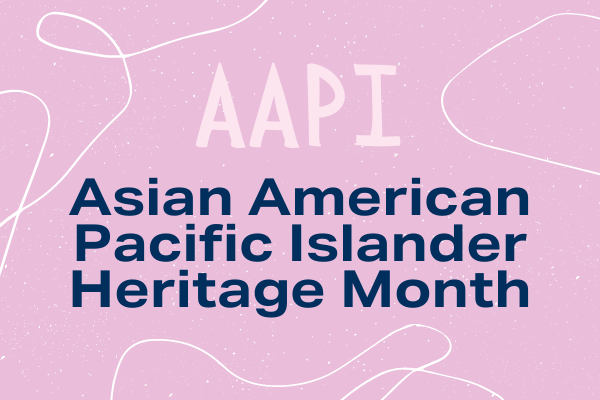May is Asian American Pacific Islander Heritage Month – a time to recognize and celebrate the contributions, achievements, and rich cultural heritage of the Asian American and Pacific Islander community in the United States. The first Asian immigrants arrived in the U.S. in 1587 when Filipinos first began migrating to California. May was chosen for observance in honor of the first official Japanese immigrant’s arrival in America on May 7, 1843, and the completion of the transcontinental railroad on May 10, 1869.
AAPI Heritage Month provides an opportunity to highlight the achievements and challenges faced by this community throughout history and foster a greater awareness and appreciation of their contributions to the social, cultural, economic and political fabric of America.
The history of the Asian American and Pacific Islander (AAPI) community in the United States reveals a deep, rich, and often untold narrative of exclusion, segregation, detention, and deportation. Despite a history and present marked with racism and anti-Asian hate, Asian Americans stand as the fastest-growing racial or ethnic group in the United States, testifying to their resilience and contribution to the nation’s cultural fabric. The AAPI population currently constitutes around 31.3% of the 44 million foreign-born people in the United States.
Immigration History of Asian Americans and Pacific Islanders
Angel Island Immigration Station
Located in the San Francisco Bay area, Angel Island Immigration Center operated from 1910 to 1940 as a hub for people arriving predominantly from Asia. Described as a beautiful “Ellis Island of the west,” filled with flowers, palm trees and a cool sea breeze, immigrants began migrating in masses but were met with hostility. Due to the rise and strength of the eugenics movement, and racist ideas and concepts of what it meant to protect the purity of White America from other races and ethnicities, Chinese immigrants were especially seen as a great racial, economic, and religious threat to White America, White labor, and Christian America. Anti-Chinese rhetoric spread throughout the country, depicting Chinese people as disease ridden heathens.
Facing Discrimination
From the enactment of the Chinese Exclusion Act to the internment of over 120,000 Japanese Americans following the bombing of Pearl Harbor, the AAPI community has endured a degree of discrimination that established distressing precedents for subsequent anti-immigration policies impacting other marginalized groups. More recently during the COVID-19 pandemic, the U.S. saw a drastic increase in anti-Asian hate crimes. This history of Asian American violence is rooted in the United States’ foundation of White supremacy, which has framed Asians as “others” and a threat to national security and White people’s professions.
The intersections between racism and misogyny also run deep, and Asian and Asian American women have long been objectified, fetishized, and hypersexualized. The Page Act of 1875 was an anti-immigration law that blocked Asian women from entering the country based on stereotypes that portrayed them as prostitutes who carried sexually transmitted diseases. Chinese women were subject to invasive and humiliating interrogation tactics until many women decided to no longer subject themselves to such treatment and stopped migrating. On paper, the Page Act explicitly forbid the importation of women for the purposes of prostitution. However, in practice, the Page Act drastically skewed the gender ratio in Chinese American communities and stifled the ability of Chinese American men to start families in America.
Blazing the Way Forward
Despite a history marked by persecution, there have been significant moments in which members of the AAPI community emerged as trailblazers, setting precedents for future generations.
Dalip Saund, from California, made history as the first Asian American, Indian American, and Sikh to serve in the United States Congress. His election shattered barriers, inspiring AAPI representation in the political arena.
Patsy T. Mink, a proud resident of Hawaii, became a trailblazer as the first Asian American woman and the first woman of color to serve in the United States Congress.
Kamala D. Harris made history as the first woman, the first Black, and the first Asian American Vice President of the United States. Her vice presidency shattered glass ceilings and stands as a powerful testament to the importance of diverse representation and women in leadership for future generations.
AAPI Heritage Month
This May, it is important that we celebrate the AAPI community and recognize the diversity as well as inequality within different ethnic groups. The AAPI community is incredibly diverse, representing over 75 countries and cultures from Central, East, West, Southeast and South Asia and Hawai’i and the Pacific Islands.
While we encourage you to participate in the various events, activities and educational programs happening this month, Tahirih is committed to honoring the AAPI community and their fight for justice in the work that we do every day. Learn more and uplift these great organizations for the work that they do in the AAPI community year-round.
- Asian Pacific Institute on Gender-based Violence
- Asian Americans Advancing Justice
- Asian American Legal Defense and Education Fund
- Asian Pacific American Institute for Congressional Studies
- National Asian Pacific American Women’s Forum


